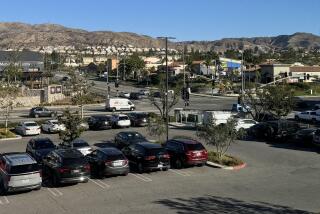GRANADA HILLS : Physics Students Off to the Races
- Share via
Something strange was affecting the ersatz raceway at Granada Hills High School on Friday.
Each of the model cars that students constructed in their advanced-placement physics class was mysteriously curving off to the right halfway to the finish line.
Students joked that the cause might be the rotation of Earth or, more likely, engines placed too far to one side. Then they set to work--conferring, arguing and making adjustments to their battery-powered, cardboard creations.
The exercise was part of teacher Albert Squatrido’s new emphasis on hands-on physics, a new element of the physics and math program designed to boost enrollment in science classes. The hands-on projects have already had their effect, said Squatrido: The number of students who have signed up for physics classes next year is double this year’s number.
Adding two more physics classes next year is just part of the story. Granada Hills High recently received a $275,000 federal grant to launch its math, science and hearing-impaired magnet program next year. Squatrido said he hopes the car races will pique the interest of other students at the school to take classes in the magnet program.
Working in groups of four, students came up with a variety of ways to make a car that could travel 20 feet up a 10% grade on a sidewalk. Rubber bands were used as tires, and straws became axles.
It wasn’t as simple as it seemed. Even after completing a series of prototypes, Kelly Kim, 18, said her group forgot one thing: to glue the wheels to the axle.
“The axle spins, but the wheels didn’t move,” she said.
Glue, tape and rubber bands for tires passed from hand to hand, and the students were soon ready for a second try. This time, several cars whizzed up the sidewalk, to the accompaniment of loud yells.
Students were given the option of designing and racing the handmade model cars or taking a written mid-term exam, and most chose the former even though constructing the cars required a two-week effort and a written report.
Squatrido said the races served as a kind of release for students facing final exams: “It helps take the pressure off,” he said.
More to Read
Sign up for Essential California
The most important California stories and recommendations in your inbox every morning.
You may occasionally receive promotional content from the Los Angeles Times.













